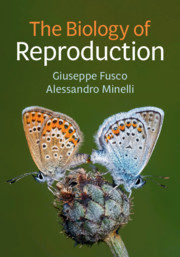Book contents
- The Biology of Reproduction
- The Biology of Reproduction
- Copyright page
- Contents
- Preface
- Figure Credits
- Introduction
- Chapter 1: Introductory Concepts
- Chapter 2: Reproduction and Life Cycle
- Chapter 3: The Natural History of Reproduction
- Chapter 4: Parental Investment in Sexual Reproduction
- Chapter 5: Genetics and Cytogenetics of Reproduction
- Chapter 6: Determination of Sex and Mating Type
- Chapter 7: Reproduction: a Taxonomic Survey
- Coda
- Appendix: A Classification of Living Organisms
- References
- Taxonomic Index
- Subject Index
- References
References
Published online by Cambridge University Press: 30 September 2019
- The Biology of Reproduction
- The Biology of Reproduction
- Copyright page
- Contents
- Preface
- Figure Credits
- Introduction
- Chapter 1: Introductory Concepts
- Chapter 2: Reproduction and Life Cycle
- Chapter 3: The Natural History of Reproduction
- Chapter 4: Parental Investment in Sexual Reproduction
- Chapter 5: Genetics and Cytogenetics of Reproduction
- Chapter 6: Determination of Sex and Mating Type
- Chapter 7: Reproduction: a Taxonomic Survey
- Coda
- Appendix: A Classification of Living Organisms
- References
- Taxonomic Index
- Subject Index
- References
Summary

- Type
- Chapter
- Information
- The Biology of Reproduction , pp. 415 - 436Publisher: Cambridge University PressPrint publication year: 2019

